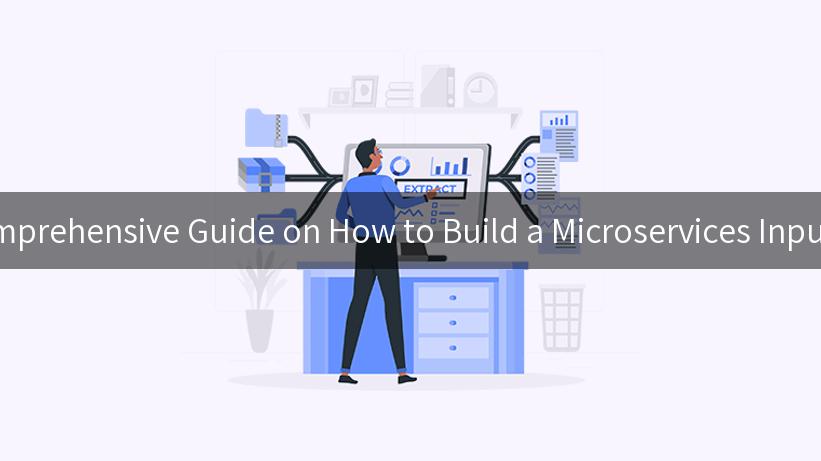
In today’s rapidly evolving technological landscape, building applications with a solid architecture is critical. With the rise of microservices, it has become crucial for developers to craft solutions that are scalable, maintainable, and efficient. In this article, we will delve into the intricacies of how to build a microservices input bot, utilizing cutting-edge tools and technologies like AI Gateway, apisix, and incorporating essential concepts such as Additional Header Parameters.
微服务架构允许开发者将功能拆分成小的独立模块。每个服务都专注于单一功能,同时通过API与其他服务进行通信。这种架构将复杂性降到最低,便于团队并行工作,提高企业的创新能力和响应速度。接下来,我们将通过几个步骤引导您构建微服务输入机器人。
Step 1: Understanding Microservices
Before embarking on building a microservices input bot, it’s essential to understand the microservices architecture. Microservices are small, autonomous services that work together to handle the logic of larger applications. Each service is responsible for a specific function and communicates over well-defined APIs.
Advantages of Microservices:
| Advantages |
Description |
| Scalability |
Services can be scaled independently based on demand. |
| Flexibility |
Developers can use different technologies for different services. |
| Robustness |
Failure of one service won’t necessarily bring the entire application down. |
| Deployment |
Services can be deployed independently, enabling faster release cycles. |
Step 2: Design the Input Bot
The next step in creating your microservices input bot is to design its architecture carefully. This involves identifying the core functionalities required by the input bot, such as receiving input, processing it, and sending back responses.
Core Components of Input Bot:
- API Gateway: Acts as a single entry point for all incoming requests, implementing
AI Gateway and routing them to various microservices.
- Microservices: Each service handles distinct functionalities like user input validation, data processing, and response generation.
- Database: A central repository that stores necessary data; could be a NoSQL database or relational database depending on your requirements.
- Message Queue: Facilitates asynchronous communication between services, like RabbitMQ, for handling requests smoothly.
Step 3: Set Up the API Gateway with apisix
To facilitate communication between various microservices and streamline API management, we will use apisix as our API Gateway. APISIX is a highly efficient and flexible open-source API gateway that supports dynamic routing and efficient load balancing.
Deployment Instructions
To set up APISIX as your API Gateway:
-
Install APISIX:
Use the following command to quickly install APISIX:
bash
curl -sSO https://apisix.apache.org/downloads/apisix-install.sh && bash apisix-install.sh
-
Configure APISIX:
Create a configuration file for your services, including routes, upstream services, and plugins that manage traffic.
Additional Header Parameters
When setting up an API Gateway, one of the other vital aspects is managing Additional Header Parameters. These are crucial as they can hold essential information regarding the user request, such as authentication tokens or metadata.
Example of Additional Header Parameters:
# Example configuration for APISIX with Additional Header Parameters
routes:
- uri: /bot
methods:
- POST
upstream:
type: roundrobin
nodes:
- host: "input-service"
port: 80
weight: 1
plugins:
- name: request-transformer
config:
add:
headers:
- "X-Request-ID: ${request_id}"
- "X-User-ID: ${user_id}"
Each request received at this route will now carry additional contextual headers to aid processing.
Step 4: Implement Microservices for the Input Bot
With the API Gateway in place, it’s time to create the microservices that interact with the bot. Each microservice should handle its specific tasks, promoting separation of concerns.
Microservice Example
Here’s a simple example of an input handling microservice built with Node.js:
const express = require('express');
const bodyParser = require('body-parser');
const app = express();
const port = 3000;
app.use(bodyParser.json());
app.post('/process-input', (req, res) => {
const inputData = req.body.input;
// Logic to process input
const responseMessage = `Received input: ${inputData}`;
res.send({ message: responseMessage });
});
app.listen(port, () => {
console.log(`Input service listening at http://localhost:${port}`);
});
This microservice listens for incoming POST requests at /process-input, processes the input, and sends back a response.
APIPark is a high-performance AI gateway that allows you to securely access the most comprehensive LLM APIs globally on the APIPark platform, including OpenAI, Anthropic, Mistral, Llama2, Google Gemini, and more.Try APIPark now! 👇👇👇
Incorporating the above practices, we will refine the services into a cohesive, functionally complete input bot.
Step 5: Testing and Quality Assurance
Testing is a crucial step in the development of your input bot. Properly crafted tests ensure that each component functions as expected. Employ unit testing on individual services as well as integration testing to ensure that the services work together correctly.
# Sample command to test the microservice
curl --location 'http://localhost:3000/process-input' \
--header 'Content-Type: application/json' \
--data '{
"input": "Hello, world!"
}'
Step 6: Deploying the Input Bot
Once you have validated the microservices, the next step is deployment. You can use platforms like Docker for containerization and orchestration tools like Kubernetes to manage your services effectively.
Advantages of Deploying with Kubernetes:
- Automated Scaling: Adjust your service based on load.
- Self-healing Capabilities: Automatically restart failed containers.
- Easy Rollback: Roll back to previous deployments seamlessly.
Conclusion
Building a microservices input bot is an engaging and rewarding endeavor that showcases the power of modern software architectures. By leveraging tools like AI Gateway, apisix, and establishing efficient communication protocols through Additional Header Parameters, you can create a scalable, resilient, and efficient solution tailored to your business needs.
As microservices architecture continues to gain momentum, the skills and knowledge required to build robust applications will only grow in value. Embrace the potential of microservices and watch your applications soar to new heights.
Now it’s your turn; take these insights, integrate them into your workflow, and begin building your next great input bot!